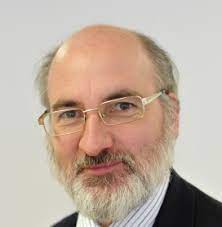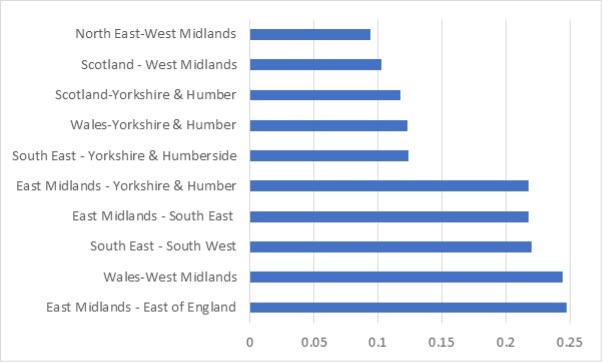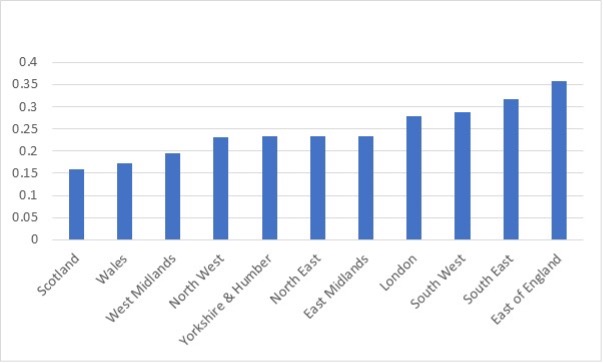TAPAS.network | 11 March 2022 | Commentary | John Siraut
Pandemic-hit varying rail use patterns revealed

Covid 19 restrictions brought serious reductions in rail travel around the country, but the impacts were varied. takes a look at the detailed figures for 2020/21 and finds both some expected and unexpected outcomes reflecting both commuter and leisure travel impacts. How will the sector recover, he wonders.
AS COVID RESTRICTIONS are lifted the question arises as to how regional rail use was impacted during the pandemic. The latest statistics from the Office of Rail and Road, which covers the financial year 2020-21, highlights the differing importance of rail to the various regions and sub-regions of Great Britain and the impact of Covid restrictions at the devolved level. During this period there were both stringent lockdowns and a period over the summer when things almost returned to normal except for international travel. This led to an increase in the number of domestic holidays to a level last seen in the pre-charter flight era. Each figure shows the percentage of rail journeys made in 2020-21 compared to the situation in 2019-20. Overall passenger numbers were 74% down on the year before. However, as the analysis shows the impact varied by journey type and location.
Figure 1 shows the best and worst performing inter-regional journey pairs in terms of retaining passengers during the pandemic. It appears that shorter trips between adjacent regions performed the best and longer distance journeys the worst. Trips to and from Yorkshire and the Humber and Scotland were amongst the worst impacted, the latter nation having generally tighter Covid restrictions than England. Although those between the North East and the West Midlands fell by over 90%. Stay-vacations and day trips to the coast may be the reason for stronger demand between the South East and the South West, the West Midlands and Wales and the East Midlands to the East of England. But even the best performing inter-regional services were down on the national average with no inter-regional pairs achieving more than 25% of the journeys compared to pre-Covid.

It appears that shorter trips between adjacent regions performed the best and longer distance journeys the worst. Trips to and from Yorkshire and the Humber and Scotland were amongst the worst impacted, the latter nation having generally tighter Covid restrictions than England.
Figure 2 shows the number of rail journeys wholly within each region in 2020-21 as a percentage of those in 2019-20. Given the generally tighter Covid restrictions in operation in Scotland and Wales it is not surprising that these regions saw rail trips fall the most, down by over 80%. Trips within the East of England held up best, running at 36% of pre-Covid levels. Generally shorter intra-regional trips held up better than longer distance inter-regional ones.

At a more local level, figure 3, shows intra-regional trips starting and ending by sub-region. Given their more stringent lock downs and limited commuting it is the more rural areas of Scotland and Wales that experienced the largest falls in patronage, down by around 85%. More surprisingly given one would expect higher levels of local commuting trips, the West Midlands and Greater Manchester also saw some of the largest falls in passenger journeys, whereas trips on Merseyside held up markedly better. London was a very mixed picture, the very heavily office, leisure and retail base of Inner London West saw a 76% reduction in passenger journeys while outer East and North East London with a higher proportion of people who could not work from home saw a 67% fall. Undoubtedly buoyed by stay-vacations Cornwall and Devon saw some of the best performances with passenger trips at nearly 40% of pre-Covid levels.

It is clear that shorter local journeys held up best during the pandemic, while areas in holiday locations generally doing better than major city regions. Rail patronage is now running at around 60% of pre-Covid levels and is continuing to recover. It will be interesting to see which areas of the country bounce back quicker especially as tensions in Europe, continued concerns about the pandemic and increasing awareness of the need to reduce emissions, encourages more people to holiday in the UK, driving growth in both short and longer distance leisure trips.
John Siraut is director of economics at Jacobs.
This article was first published in LTT magazine, LTT841, 11 March 2022.
You are currently viewing this page as TAPAS Taster user.
To read and make comments on this article you need to register for free as TAPAS Select user and log in.

Log in